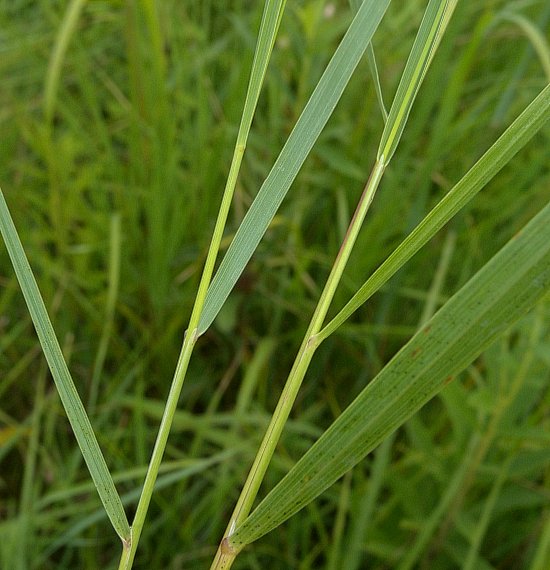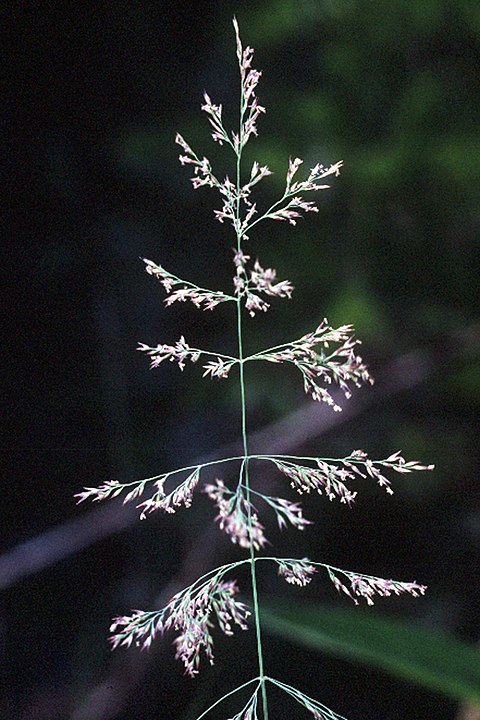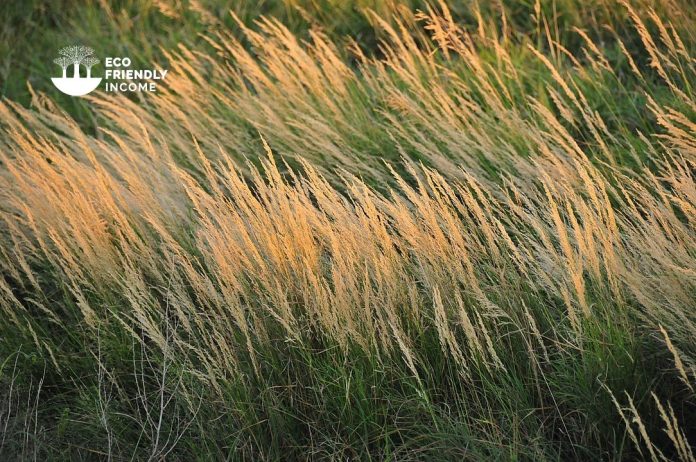A field guide on how to identify and propagate Bluejoint (Calamagrostis canadensis), a hardy zone 2 graminoid that is native to North America.
Bluejoint is a graminoid part of the grass family (Poaceae).
How to Identify Bluejoint (Calamagrostis canadensis)
Leaves

Canada bluejoint leaves are linear-shaped with an alternate leaf arrangement on the stem, and entire margins (smooth).
The ligule is 3 to 10 mm long, ragged/shredded along the tip edge.
Inflorescence

Bluejoint flowers are attached to branches rather than the main axis of the inflorescence. Each spikelet (2-5mm long) holds 1 floret.
Flowering Season
Bluejoint grass fruits from July to August.
Habitat
Canada bluejoint naturally grows in open woods, swamps, bogs, marshes, and along ponds and streams.
If you see the following plants, there’s a good chance bluejoint grass might be growing nearby:
- March Aster (Symphyotrichum subulatum)
- Tussock Sedge (Carex stricta)
- Marsh Milkweed (Asclepias incarnata)
Wildlife Value
Historically, bluegrass was an important source of food for bison herds. It’s still an important source of food for elk, deer, moose, and waterfowl.
How to Propagate Bluejoint (Calamagrostis canadensis)

Hardiness Zone: 2-6

Soil Type: Acidic clay, loam

Water: High.

Exposure: Full Sun to Partial Shade.
Grasses produce seeds that are quickly viable and require a very short stratification. Propagation by seed is by far the best technique for bluejoint.
How to Propagate Canada Bluejoint (Calamagrostis canadensis) by Seed
You can collect bluejoint seeds at the end of their fruiting season from August to October.
Alternatively, you can order the seeds online at Everwilde Farms.
How to Sow
Canada bluejoint seeds do not require stratification, which means you can plant them right away and avoid a cold stratification process.
The best time to sow seeds is in spring for this season or late fall for the following season.
Surface sow the seeds and cover them with a fine layer of topsoil, compact the soil tightly and moisten until germination.
Bluejoint seeds usually start to germinate within 2 days.
The seedlings will require constant watering until established.
Where to Sow
This grass does best near ponds or river streams. It will flourish during periods of flooding and will attract birds.
Bluejoint rhizomes spread quickly but not too deep. They can be quite helpful to prevent erosion.

